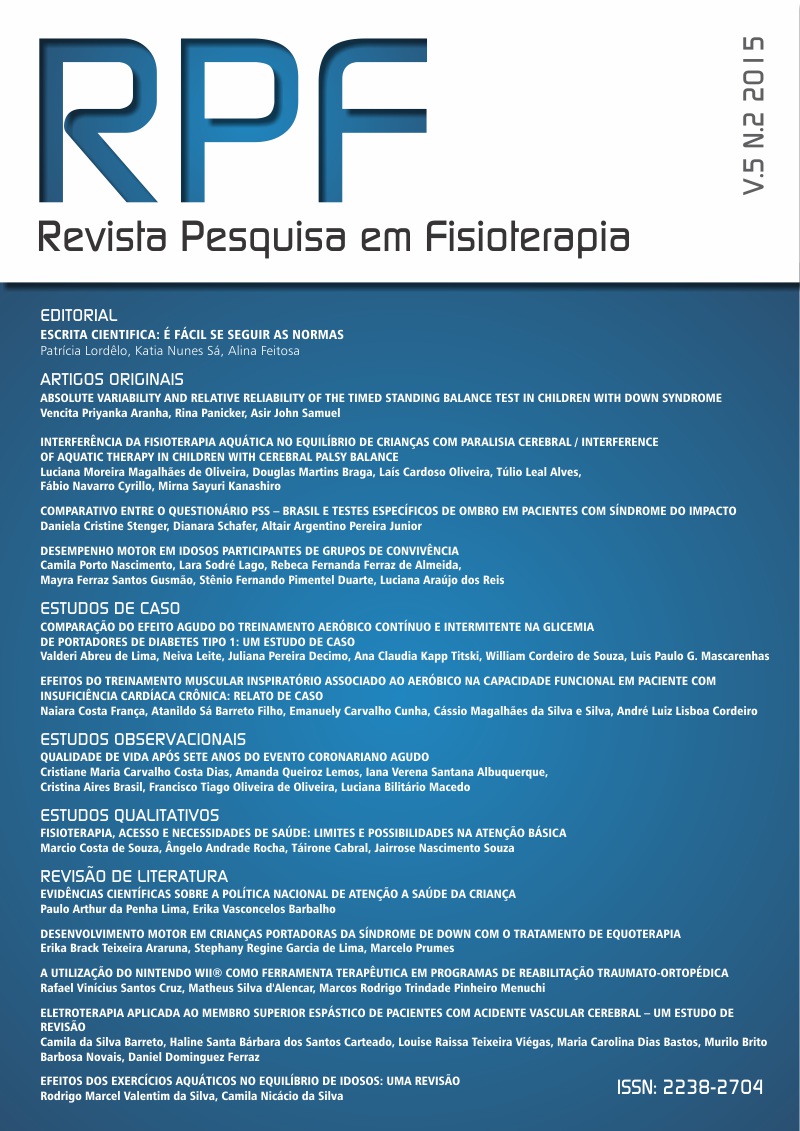COMPARISON OF THE EFFECT OF CONTINUOUS AND INTERMITTENT AEROBIC TRAINING ON BLOOD GLUCOSE IN PATIENTS WITH TYPE 1 DIABETES: A CASE STUDY
DOI:
https://doi.org/10.17267/2238-2704rpf.v5i2.655Keywords:
Diabetes Mellitus, Blood glucose, ExerciseAbstract
Introduction: Continuous change glucose in patients with diabetes mellitus type 1 results in several cardiovascular complications that can be softened by the action of physical exercise. Objective: The objective of this study is to verify the acute influence of continuous aerobic exercise and intermittent aerobic exercise on blood sugar diabetes type 1. Methods: We evaluated two bodybuilders adults for over three years and those of diabetes mellitus type 1. In the first assessment, subjects performed 30 minutes of continuous aerobic exercise on a cycle ergometer with intensity of 60% of maximum heart rate (MHR). On Monday, the evaluated were exposed to performing aerobic exercise with maximum intensity sprints (10 seconds duration) interspersed with two minutes of continuous exercise, to complete the total time of 30 minutes. Heart rate and blood glucose before and after the exercises was monitored. For data analysis, they were exposed frequency (%). Results: Comparing the two exercise protocols, there was a greater reduction in blood glucose induced by continuous aerobic exercise (45.5 and 41.8%) than intermittent aerobic (28.8 and 7%) in patients with type 1 diabetes. There was a smaller decline of glucose in intermittent exercise compared to continuous exercise. Conclusion: This maybe a good strategy to reduce the risk of hypoglycemia after exercise.Downloads
Download data is not yet available.
Downloads
Published
10/16/2015
Issue
Section
Case Reports
How to Cite
1.
Lima VA de, Leite N, Decimo JP, Titski ACK, Souza WC de, Mascarenhas LPG. COMPARISON OF THE EFFECT OF CONTINUOUS AND INTERMITTENT AEROBIC TRAINING ON BLOOD GLUCOSE IN PATIENTS WITH TYPE 1 DIABETES: A CASE STUDY. Rev Pesq Fisio [Internet]. 2015 Oct. 16 [cited 2025 Dec. 5];5(2). Available from: https://journals.bahiana.edu.br/index.php/fisioterapia/article/view/655



